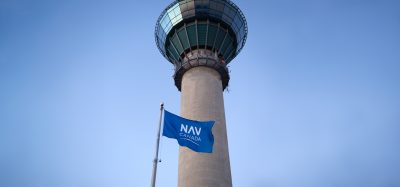FAB Europe Central enters a new phase
- Like
- Digg
- Del
- Tumblr
- VKontakte
- Buffer
- Love This
- Odnoklassniki
- Meneame
- Blogger
- Amazon
- Yahoo Mail
- Gmail
- AOL
- Newsvine
- HackerNews
- Evernote
- MySpace
- Mail.ru
- Viadeo
- Line
- Comments
- Yummly
- SMS
- Viber
- Telegram
- Subscribe
- Skype
- Facebook Messenger
- Kakao
- LiveJournal
- Yammer
- Edgar
- Fintel
- Mix
- Instapaper
- Copy Link
Posted: 1 August 2008 | Daniel Weder | No comments yet
22 July 2008; The air navigation service providers (ANSPs) and the civil aviation and military authorities of the six States Belgium, France, Germany, Luxembourg, the Netherlands and Switzerland have carried out a detailed feasibility study on the creation of a so-called Functional Airspace Block (FAB). The study shows that a FAB Europe Central (FABEC) will provide considerable improvements in the efficiency of air traffic services. According to the study, safe and punctual air traffic control services in a growing market will be possible in the future if air traffic control is no longer organised mainly across national borders.
22 July 2008; The air navigation service providers (ANSPs) and the civil aviation and military authorities of the six States Belgium, France, Germany, Luxembourg, the Netherlands and Switzerland have carried out a detailed feasibility study on the creation of a so-called Functional Airspace Block (FAB). The study shows that a FAB Europe Central (FABEC) will provide considerable improvements in the efficiency of air traffic services. According to the study, safe and punctual air traffic control services in a growing market will be possible in the future if air traffic control is no longer organised mainly across national borders.
All partners from the six States (States, military and ANSPs) welcomed the results of the study. The States are now analysing the study with a view to deciding on the creation of a legal basis for a common FABEC. They also have to decide how the military should be involved. The implementation requires a dual approach: the States are scheduled to sign a Declaration of Intent in November 2008. To create the final institutional basis, a Treaty is expected to be signed in 2010. In parallel, the ANSPs have already begun to initiate activities which can be undertaken within the current legal framework and are in line with a possible common airspace. To combine these activities a common project was launched.
Officially launched in November 2006, the detailed FABEC Feasibility Study has provided an ambitious range of cooperation initiatives. Up to 240 experts shared their expertise and created, over a period of 18 months, a common perspective on the future of air navigation services in a high-density area with the hubs of Paris, Amsterdam, Frankfurt, Munich, Brussels and Zurich. FABEC also promises to be a cornerstone of the Single European Sky (SES), the initiative launched by the European Commission and enshrined in EU legislation since 2004. By taking account of airspace as a whole as opposed to just upper airspace, the FABEC study went far beyond the requirements of the SES.
About FABEC
With the Single European Sky (SES), the European Commission has called for the creation of so-called functional airspace blocks (FABs) in order to respond to the challenges resulting from the growth of air traffic in Europe. These blocks of airspace would be organised according to traffic flows rather than national boundaries, the latter currently being the case in most parts of Europe.
Six European States (Belgium, France, Germany, Luxembourg, the Netherlands and Switzerland) and seven ANSPs have conducted a feasibility study to determine how a common airspace block, to be called FAB Europe Central, would meet the goals set by the European Commission. Although Switzerland is not a member of the EU, it participates in the SES Project and in the Single European Sky Committee.
The airspace of the six States, located as they are in the core of Europe, is one of the busiest and most complex in the world. Most of the large European airports and major civil and military airways are located in this area.
FABEC airspace is characterised by:
- A dimension of 1.7 million km2
- 5.3 million flights per year
- 55% of all European air traffic
- A forecast traffic growth of 50% between 2005 and 2018
















